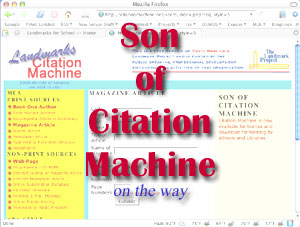Added Later 11:09 AM
I’m listening to a podcast by Moira Gunn, an interview with Brithis software entrepreneur Dill Faulkes (the Bill Gates of Britain). They are talking about the Faulkes Telescope, which is a project that he is funding where children in Britain can, through the Internet, control a telescope in Hawaii (where it dark during school hours), and conduct authentic astronomical research.
Faulkes says that their desire is not necessarily to make astronomers out of these students, but to help them to learn what science is. I’ve probably said the same thing myself, but only then realized the implications. There is a general distrust of science in our society, and part of the reason is that we never learned, in traditional schooling, what scientists do, what science is.
He also said something that seems to profound to have not been said before. So forgive me if this is an education euphamism that I alone have never heard. But he said, that we lose students to science at around 11 years of age, that before that time students ask “why?”, why do things happen. After that time, they ask “what?”, what do I need to know — to pass the test. What do you think? [comment?]
No big stories today. Just lots of little ones.
According to a recent (May 24, 2005) Ipsos opinion poll, Blogs (are) Now Seen By Readers As Influential Media Sources. You can read some of the details in a p2pnet.net News story, Blogs vs Mainstream Media.
What I found most interesting was the connection between whether people read blogs and their opinions concerning the reliability of traditional news sources.
| Blog-readers are also more likely to judge other media sources more accurate than their non-blogging counterparts |
The study indicates that blog-readers will most likely cite local news, newspapers, cable news networks , and network news as accurate.
| News Source |
Blog-Readers |
Non-Blog-Readers |
| Local News |
84% |
75% |
| Newspapers |
81% |
71% |
| Cable News Networks |
79% |
71% |
| Network News |
78% |
69% |
The differences are not substancial, but curiously consistent. What do you think about this? [comment?]
Is Apple Limiting Technology?
How about that Apple. They are finally acknowledging podcasting, which is, after all, named for Apple. The next upgrade of iTunes will feature podcatching capabilities. Lots of other bloggers and podcasters have already commented on most of the exciting and disturbing aspects of this announcement, but to me, it connects with another development in the Mac arena.
OK, I got this e-mail from Steve Dembo (Teacher42) yesterday concerning something called Meme tag. I can infer a meaning but am not taking the time to look it up. My web site is being flaky at the moment, so I’ll just take the time to answer most of the questions.
- First 5 Songs in Shuffle of Entire Music Library
- Suite: Judy Blue Eyes – CSNY
- The Rain, The Park and Other Things — Cowsills
- Margaritaville (lost verse included) — need I say?
- By the Time I Get to Phoenix — Glen Campbell
- Genesis Ch. 1: V.32 — The Alan Parsons Project
- Current Book You are Reading
- The Broker — John Grisham
- The Terminal Experiment — Robert J. Sawyer
- Last Movie Seen in a Theater and Where
- King Arthur — Saw it at the theatre in our new neighborhood outdoor shopping mall. The movie was a lot better than I’d expected it to be.
- Five People to whom I’ll pass this… Got to think about that…
|
One of the touted features of Tiger, Apple’s new Mac operating system, is an upgrade to Safari, that features RSS syndication, integrated into the browser. What disturbs me about this, is that I feel that the result will be a limiting factor for the potentials of aggregators. A news aggregator is not a browser, and a web browser is not an aggregator. They are two tools with too distinct functions in terms of helping us access information. One allows us to go out and browse information. The other helps us train the information to find us.
Now I see the value of combining the two so that we have one-stop-shopping of our digital information libraries, regardless of how it is found. But Podcasting is whispering at another capability for the aggregator. With podcasting, the aggregator checks for new programs, downloads them as they are posted, and then pushes or sends them to the appropriate device, in my case, an iPod. As more and more of our devices become connected to the networks, what aggregators imply is a central interface, that allows us to train information to behave in the ways that we want, that improves our experience.
I’ve talked about this before, but another application occurred to me the other day. In central North Carolina, we are experiencing that weird couple of weeks where the weather doesn’t know if it’s supposed to be Spring or Summer. Our daily temperatures are ranging wildly, and my brand new heating and air-condition system is having a hard time adapting. It’s either too hot in the house, or too chilly, depending on what the weather was yesterday. In the future, an aggregator may allow me to subscribe to weather information from the near by weather service or news agency, and then send that information to my heating system so that it configures itself, based on our preferences. Many other examples of training information to find us, and then sending it to the technology that can best use it.
Aggregators will become browsers, and browsers will become aggregators. But I hope that this merger does not cause us to overlook some pretty important opportunities. Perhaps the solution is in what Apple is doing, putting an aggregator in both its browser and its audio management software.
I use NewsFire as my Aggregator.
DOE Speak? You don’t say!
There was some very interesting talk from the Department of Education. At the Education Visionary Conference held by Intel in Washington last week, Susan Patrick, the director of education technology, for the U.S. Department of Education said, as reported by eSchool News,
| We are so trapped in the memory of what school was like for us. When we were students, the world outside of school looked like the world inside school. Now, it does not. |
She went on to say,
| The ed-tech community loves the term ‘integration.’ But our schools need transformation, not integration. Simply integrating technology into instruction, accepts the existing environment, the existing instructional model. … We need to build instruction for personalized, customized learning for every student’s needs. |
OK, I’m going to afford myself a cheap shot here. “So why is the Bush administration seeking to wipe out educational technology funding?” That said, I’m going to pay some attention to Ms. Patrick. I suspect that her vision of the education that is instigated by technology may be different from mine, but modernizing classroom to prepare children for the 21st century is looking in the right direction. Not backwards!
 So now,
So now, ),
),

 on an issue that has already been
on an issue that has already been  But aside from that, the focus of the
But aside from that, the focus of the  So, let’s say that we have a suburban community, where a local newspaper reporter has obtained public documents regarding an issue being handled by local government. Reading through the document, the enterprising journalist finds several references that appear suspicious to his investigative mind. He makes some assumptions from his reading, without verifying facts and identifying unfamiliar labels. The journalist then approaches elected officials with the assumptions, reporting them as fact, and records a number of incendiary comments from those elected officials. The story appears in that week’s issue of the paper.
So, let’s say that we have a suburban community, where a local newspaper reporter has obtained public documents regarding an issue being handled by local government. Reading through the document, the enterprising journalist finds several references that appear suspicious to his investigative mind. He makes some assumptions from his reading, without verifying facts and identifying unfamiliar labels. The journalist then approaches elected officials with the assumptions, reporting them as fact, and records a number of incendiary comments from those elected officials. The story appears in that week’s issue of the paper. It may not be a surprise that Citation Machine (http://citationmachine.net) required the largest hosting plan. In fact, it may have been CM and the closing semester that brought that web server to its knees in tears.
It may not be a surprise that Citation Machine (http://citationmachine.net) required the largest hosting plan. In fact, it may have been CM and the closing semester that brought that web server to its knees in tears.